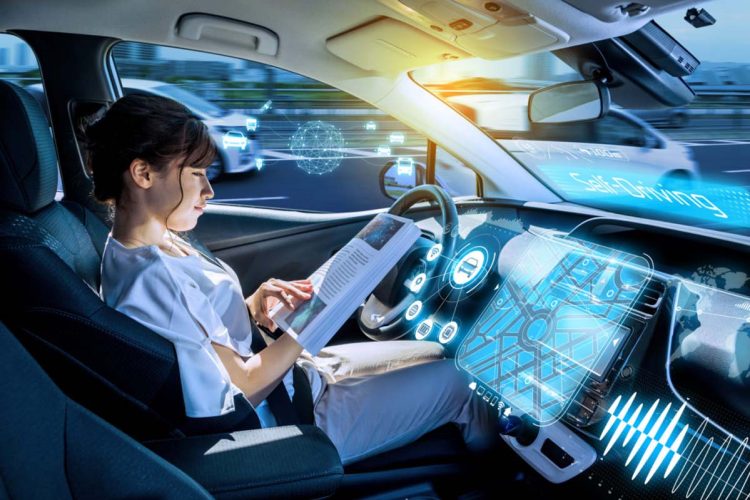Introduction: The Promise and Reality of Autonomous Vehicles
The dream of autonomous driving has been a topic of discussion for decades. The promise of cars that drive themselves, eliminating the need for human intervention, offers incredible potential to transform the way we travel. From reducing traffic accidents to offering greater mobility for elderly and disabled individuals, the benefits seem clear. However, the technology required to achieve fully autonomous vehicles is complex and presents significant challenges. In this article, we will explore how autonomous driving technology is evolving, the hurdles that must be overcome, and when we can expect self-driving cars to truly change the way we move.
1. Understanding Autonomous Driving Technology: The Basics
A. What is Autonomous Driving?
- The concept of autonomous driving (self-driving cars) involves vehicles capable of sensing their environment and operating without human intervention.
- Definitions of autonomy levels (from Level 0 to Level 5 as defined by the SAE—Society of Automotive Engineers).
- Level 0: No automation (all driving tasks are handled by the human driver).
- Level 1: Driver assistance (e.g., cruise control).
- Level 2: Partial automation (car can steer and accelerate, but the human driver must be ready to intervene).
- Level 3: Conditional automation (car can drive itself in specific conditions but requires the driver to intervene if necessary).
- Level 4: High automation (car can drive itself in most conditions, but may need a driver in rare situations).
- Level 5: Full automation (no human intervention required at all in any conditions).
B. The Technology Behind Autonomous Vehicles
- Sensors and Cameras: LIDAR (Light Detection and Ranging), radar, cameras, and ultrasonic sensors provide data to detect surroundings.
- Machine Learning and AI: How AI algorithms process sensor data to make decisions.
- Connectivity: V2X (Vehicle-to-Everything) communication enables cars to exchange data with infrastructure and other vehicles, improving situational awareness.
- Mapping and GPS: High-definition maps and precise GPS help vehicles navigate complex environments.
2. The Current State of Autonomous Vehicle Development
A. Major Players in the Industry
- Companies such as Tesla, Waymo (Google’s self-driving car project), Cruise (General Motors), and Aurora are at the forefront of autonomous vehicle development.
- Tech giants like Apple and Uber have also made significant strides in the field, each with different strategies and goals.
- Automakers like Ford, BMW, and Volkswagen are working on integrating autonomous driving capabilities into their vehicles, from semi-autonomous features to full autonomy.
B. Advancements in Technology
- Progress on Level 2 and Level 3 systems, such as Tesla’s Autopilot and Waymo’s fully driverless rides in limited areas.
- Early adopters are focusing on specific use cases like autonomous taxis (e.g., Waymo One), trucking, and shuttle services.
- Test zones and pilot programs in cities like Phoenix (Waymo) and San Francisco (Cruise) show how autonomous vehicles are already operating in real-world environments.
C. Current Challenges and Obstacles
- Safety: Ensuring the safety of autonomous vehicles in a variety of driving conditions, including inclement weather, road construction, and unexpected obstacles.
- Technology Reliability: The limitations of current sensors, AI processing, and mapping systems.
- Ethical Dilemmas: How autonomous vehicles should make decisions in emergency situations (e.g., who to prioritize in an unavoidable accident).
- Legal and Regulatory Challenges: The need for clear regulations and standards around the testing and deployment of autonomous vehicles.
3. The Potential Impact of Autonomous Driving on Society
A. Traffic Safety and Reduction of Accidents
- Human error accounts for over 90% of traffic accidents, and autonomous vehicles could dramatically reduce accidents by eliminating mistakes caused by distracted or impaired driving.
- How autonomous driving technology aims to improve reaction times, decision-making, and predictive behavior.
B. Increased Mobility and Accessibility
- Autonomous vehicles could provide greater independence for people who are unable to drive, such as the elderly and disabled individuals.
- The potential for reducing the reliance on public transportation, providing on-demand, personalized rides for people in underserved areas.
C. Environmental Impact and Efficiency
- Autonomous vehicles could lead to smarter driving, reducing fuel consumption and lowering emissions through more efficient routes and smoother driving patterns.
- The possibility of reducing congestion and optimizing traffic flow, leading to more efficient use of roads.
D. Economic and Job Market Changes
- The impact on industries such as transportation, logistics, and insurance—how self-driving cars will change the demand for human drivers and reshape various sectors.
- The potential job displacement in sectors like trucking, delivery services, and taxi driving, alongside new opportunities in autonomous technology, software development, and vehicle maintenance.

4. The Road to Full Autonomy: When Will It Happen?
A. Challenges to Achieving Level 5 Autonomy
- The complexity of building systems that can handle unpredictable human behaviors and chaotic road situations.
- The need for infrastructure upgrades, including smart roads and communication systems, to enable autonomous vehicles to interact safely with other vehicles and traffic signals.
- Public trust and how perception of safety and reliability must be built before widespread adoption can occur.
B. Timeline Predictions
- Experts have varying opinions on when fully autonomous vehicles will be ready for mass deployment. Some estimate it could be within the next 10-20 years, while others predict it will take much longer.
- Why pilot projects and urban testing areas are crucial for advancing autonomous technology and refining its systems.
- The role of incremental adoption—how vehicles with partial automation (e.g., Level 3 and Level 4) will become more common before full autonomy is achieved.
C. Regulatory and Legal Frameworks
- The importance of global cooperation in establishing regulatory standards and laws for autonomous vehicles, including liability issues (who is responsible in case of an accident?).
- How governments are addressing testing, road safety, and insurance requirements.
- Different regions (e.g., the U.S., Europe, China) have different approaches to regulation, which can affect the speed at which autonomous driving becomes widespread.
5. The Future of Autonomous Transportation: Transforming Cities and Infrastructure
A. Smart Cities and Infrastructure
- The role of autonomous vehicles in the development of smart cities, where interconnected technology improves overall urban living.
- How autonomous buses, taxis, and delivery vehicles could reshape the urban mobility landscape, reducing the need for privately owned cars and parking spaces.
B. Shared Mobility and Transportation-as-a-Service (TaaS)
- The rise of shared mobility models, including autonomous ride-hailing services and the impact on car ownership.
- How autonomous vehicles could lead to a more efficient and accessible public transportation system, providing door-to-door service.
C. The Integration of Autonomous Driving with Other Technologies
- The fusion of autonomous vehicles with electric vehicles (EVs)—how self-driving electric cars can complement each other and create a more sustainable transportation system.
- The potential for integrating 5G networks, AI, and big data to enhance vehicle performance and real-time decision-making.
6. Public Perception and the Transition to Autonomous Driving
A. Consumer Acceptance and Trust
- Public concerns about the safety and reliability of autonomous vehicles—how the industry is addressing fears about accidents, hacking, and technology failures.
- Strategies for increasing public acceptance, including gradual adoption of semi-autonomous features in vehicles.
B. Ethical and Societal Concerns
- Ethical dilemmas faced by autonomous vehicles, such as moral decision-making during unavoidable accidents (e.g., who to prioritize in a crash scenario).
- How the adoption of autonomous vehicles could impact social and cultural norms, including the shift in how people view driving and vehicle ownership.
C. The Role of Education and Awareness
- The need for public education campaigns to help people understand how autonomous driving works and its potential benefits.
- How to bridge the knowledge gap and increase awareness about the technology’s capabilities, limitations, and safety measures.
7. Conclusion: When Will Autonomous Vehicles Change Our Way of Traveling?
Autonomous driving technology holds enormous promise for transforming our transportation systems, improving safety, reducing congestion, and providing new forms of mobility for all. However, achieving the vision of fully autonomous vehicles will require overcoming numerous technological, regulatory, and societal challenges. The timeline for this transformation remains uncertain, but the pace of progress is undeniable. As the technology matures and public trust builds, it is likely that autonomous vehicles will become a significant part of our transportation infrastructure in the coming decades. Ultimately, the success of autonomous driving will depend not only on the advancement of technology but also on how effectively society adapts to these new ways of traveling.


































Discussion about this post